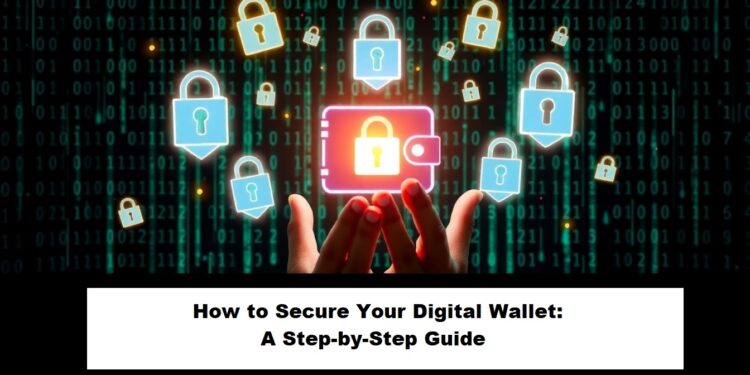In today’s digital age, securing your digital wallet is as crucial as locking the doors to your house. Digital wallets store sensitive information like credit card details, cryptocurrencies, and other financial assets, making them a prime target for hackers and scammers. Without proper security measures, you risk losing your hard-earned money in the blink of an eye.
But don’t worry! This guide will walk you through everything you need to know to safeguard your digital wallet, from understanding threats to implementing best practices.
Types of Digital Wallets and Their Features
Wallet Type |
Description |
Examples |
Security Level |
|---|---|---|---|
Mobile Wallets |
Wallets used on smartphones for contactless payments or online transactions. |
Apple Pay, Google Pay |
Medium |
Cryptocurrency Wallets |
Specialized wallets for managing cryptocurrencies like Bitcoin and Ethereum. |
MetaMask, Trust Wallet |
High |
Web Wallets |
Browser-based wallets accessible via the internet. |
PayPal, Venmo |
Medium |
Cold Wallets |
Offline wallets for securely storing assets long-term. |
Ledger Nano, Trezor |
Very High |
Understanding Digital Wallets
What is a Digital Wallet?
A digital wallet is a software-based system that securely stores your payment information and passwords for numerous payment methods. These wallets allow users to make transactions without needing physical cash or cards. Common examples include Apple Pay, Google Pay, and cryptocurrency wallets like MetaMask or Ledger.
Types of Digital Wallets
Digital wallets come in various forms, each with unique features and security levels:
- Mobile Wallets: Used on smartphones for payments at stores or online. Examples include Samsung Pay and PayPal.
- Cryptocurrency Wallets: Specialized for managing digital currencies like Bitcoin and Ethereum.
- Web Wallets: Browser-based wallets accessible from any device with internet connectivity.
Understanding these types is vital for selecting the right one for your needs.
Common Threats to Digital Wallets
Phishing Scams
Phishing involves tricking users into providing sensitive information through fake websites or emails. A realistic-looking email from your wallet provider could be a scam designed to steal your login details.
Malware and Keyloggers
Malicious software can infiltrate your devices, tracking your keystrokes or stealing wallet files directly.
Social Engineering Attacks
Hackers manipulate victims into revealing sensitive details by exploiting trust, often posing as customer service representatives.
Best Practices for Securing Your Digital Wallet
Practice |
Description |
Benefit |
|---|---|---|
Strong Passwords |
Use a mix of letters, numbers, and symbols to create unique passwords. |
Prevents easy access through brute force attacks. |
Two-Factor Authentication |
Add an extra layer of security by requiring a second verification step. |
Reduces the risk of unauthorized logins. |
Regular Software Updates |
Always use the latest version of your wallet software to patch vulnerabilities. |
Protects against known exploits. |
Cold Storage |
Store assets offline using a hardware wallet. |
Provides maximum security against online threats. |
VPN Usage |
Encrypt your internet connection when accessing wallets online. |
Protects against hackers on public Wi-Fi. |
Best Practices for Securing Digital Wallets
Use Strong Passwords
Creating a complex password is your first defense against unauthorized access. Combine upper and lowercase letters, numbers, and special characters to create a robust password.
Enable Two-Factor Authentication (2FA)
Two-factor authentication adds an extra layer of security, requiring you to verify your identity through a second step, such as a text message code or an authentication app.
Regularly Update Wallet Software
Developers frequently release updates to patch security vulnerabilities. Ensure your wallet software is always up-to-date.
Choosing the Right Wallet for Security
Hot Wallets vs. Cold Wallets
- Hot Wallets: Connected to the internet, convenient for frequent transactions but more vulnerable to attacks.
- Cold Wallets: Offline storage devices like hardware wallets, offering superior security for long-term holdings.
Features to Look for in a Secure Wallet
Look for wallets with encryption, multi-signature options, and compatibility with 2FA for maximum protection.
Protecting Your Recovery Phrases
Importance of Recovery Phrases
Your recovery phrase is the key to restoring access to your wallet. If someone gains access to it, they can take control of your funds.
How to Store Recovery Phrases Safely
Write down your recovery phrase on paper and store it in a secure location, such as a safe. Avoid storing it digitally to reduce the risk of hacking.
Secure Transactions

Verifying Recipient Information
Always double-check recipient details before initiating any transaction. A single typo can result in funds being sent to the wrong address.
Using Secure Connections
Make sure you’re using a secure connection (HTTPS) when accessing your wallet. Avoid making transactions on unsecured networks.
Avoiding Public Wi-Fi
Risks of Using Public Wi-Fi
Public Wi-Fi networks are breeding grounds for hackers who can intercept your data, including wallet credentials.
How to Use VPN for Security
A Virtual Private Network (VPN) encrypts your connection, making it nearly impossible for hackers to eavesdrop on your activities.
Recognizing Suspicious Activities
Red Flags to Watch Out For
Unfamiliar transactions, failed login attempts, and sudden email alerts are signs of potential threats.
How to Act on Suspicious Activity
Immediately change your passwords and enable additional security measures if you notice anything suspicious.
Backing Up Your Wallet
Why Backups are Essential
Accidents happen, from hardware failures to theft. Backing up your wallet ensures you can recover your funds.
Tips for Safe Backup Storage
Store backups on encrypted external drives or other secure media, and avoid keeping them online.
Leveraging Security Tools
Antivirus and Anti-Malware Software
Keep your devices free from malicious software by using reputable antivirus programs.
Firewall and Security Plugins
Firewalls and browser security plugins can prevent unauthorized access and block harmful websites.
Educating Yourself and Others
Importance of Staying Informed
Cybersecurity is an evolving field. Staying updated on the latest threats and tools is key to protecting your wallet.
Sharing Knowledge with Friends and Family
Helping your loved ones secure their wallets can prevent them from falling victim to cyber threats.
Legal and Financial Protections

Checking for Insurance or Guarantees
Some digital wallet providers offer insurance against theft or hacking. Check the terms before choosing a provider.
Understanding Your Rights
Familiarize yourself with local regulations and consumer protections for digital wallets.
Preparing for Worst-Case Scenarios
Steps to Take After a Breach
If your wallet is compromised, notify your provider immediately, secure remaining funds, and report the breach to authorities.
Contacting Authorities and Providers
Inform law enforcement and your wallet provider to help investigate and recover lost assets.
Conclusion
Securing your digital wallet doesn’t have to be overwhelming. By following these steps, you can significantly reduce the risks and ensure your financial data remains safe. Remember, cybersecurity is not a one-time effort—it’s an ongoing commitment to staying vigilant.
FAQs
What is the safest type of digital wallet?
Cold wallets are the safest as they remain offline, minimizing exposure to cyber threats.
Can I use public Wi-Fi to access my wallet?
It’s not recommended. Use a VPN if you must access your wallet on public networks.
What should I do if I lose my recovery phrase?
Unfortunately, without your recovery phrase, it’s nearly impossible to regain access to your wallet. Always store it securely.
Is enabling 2FA enough to secure my wallet?
While 2FA adds a significant layer of security, combining it with other practices like strong passwords and updates is better.
How often should I update my wallet software?
Regularly check for updates and install them immediately to protect against vulnerabilities.





